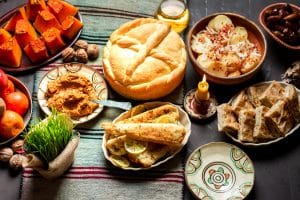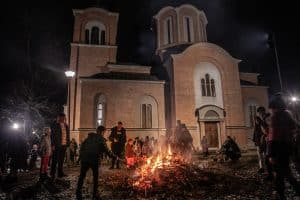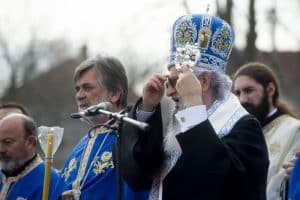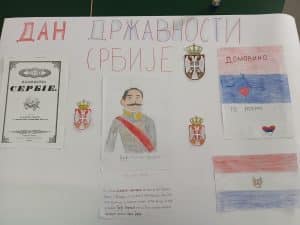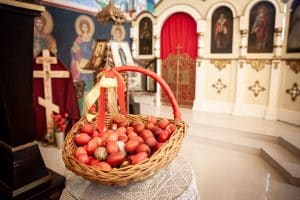Serbian holidays show how civic and religious identity are often interchangeable in Serbia. Religion enters into almost every holiday listed below. Many of these holidays focus on family and tradition, but many observances focus on the sacrifices that Serbs have made in wars and battles ranging from the Battle of Kosovo in 1389 to WWI and WWII. Serbia incorporates much of this into its educational system, teaching and honoring days in history with special lessons and events. Traditional Serbian food, and especially bread, plays a large role in many celebrations. While some holidays incorporate pre-Christian elements, the symbolism of those elements in Serbia has been almost entirely replaced with Christian imagery.
Serbia is also unique in having optional days off for its religious minorities. Although the population of Serbia is more than 80% Serbian Orthodox, Serbian law allows the country’s Muslim, Catholic, Protestant, and Jewish minorities to treat their most important holidays as public holidays, with guaranteed days off.
Days Off
Long Weekends and Extra Days Off by Semester in 2025
(Additional days off given by religion, see below)
| Spring | Summer | Fall | Winter |
| March 20 April 3-6 April 10-13 May 27 |
Nov 11 | December 25 January 1-2, 6-7 February 15-17 |
New Year’s Day
in Serbian: Nova godina (Нова година)
January 1 – January 2, 2026
Public holiday
(days off: Jan 1, 2026 – Jan 2, 2026)
The streets explode with fireworks, music, and laughter as midnight strikes. In Serbia, Nova godina is less about resolutions and more about joy. People often gather with friends and family at home, in kafanas (traditional Serbian coffeeshop/taverns), or go to clubs or restaurants to celebrate. Many toasts are made to express gratitude for family, friends, and good fortune as well as to express hope that the new year will bring success, happiness, and especially health. Glasses of champagne or rakija, Serbia’s national drink are raised over tables filled with traditional foods like roast pork and/or lamb, Olivier salad, (known in Serbia as ruska salata), sarma (stuffed cabbage rolls), prebranac (baked beans), and other delicacies.

The night often starts with modern pop music on the TV, but nearly always ends with popular folk music, sung by the revelers themselves. These songs range from cheerful singalongs to soulful ballads. A highlight for children is the arrival of Deda Mraz (Деда Мраз), Serbia’s version of Santa Claus, who brings gifts to mark the New Year. In public squares, elaborate decorations and appearances by Deda Mraz are staples of the holiday.
January 1st is a day of rest and recovery, often spent at home with family, while January 2nd, also always a day off, carries on the festive spirit with visits to friends and relatives, relaxed meals, and a few more rakija-fueled toasts.
New Year celebrations have been in place in Serbia only since 1944, when the Communists, backed by Tito, began popularizing traditions modeled largely off Russia’s. The move was made to align the two cultures and to help repress Serbia’s strong religious traditions. Some in Serbia mourn the fact that the holiday interrupts what had been traditional Christmas Lent, has arguably detracted from Orthodox Christmas celebrations, and largely replaced traditions of celebrating mothers, fathers, and children on the Sundays before and after Orthodox Christmas. However, Nova godina is today thoroughly integrated with Serbian culture and celebrated by nearly all.
Orthodox Christmas
in Serbian: Božić (Божић)
January 7, 2026
Public holiday
(day off: Jan 7, 2026)
The name of Orthodox Christmas in Serbian is “Božić,” which translates as “young God,” referring directly to Jesus. The holiday is generally celebrated as a quiet and peaceful one centered on faith and family. This is perhaps the important religious holiday on the Serbian calendar. Serbia celebrates Christmas according to the Orthodox (Julian) calendar.
At dawn on Christmas Eve (known as Badnje veče in Serbian), men traditionally cut oak branches, known as “badnjak.” For those in cities or unable to cut their own, the streets come alive with vendors selling bundles of badnjak. The branches are later burned at home or, much more common in cities, tossed into bonfires held at churches. This yule log tradition pre-dates Christianity, when the fire was meant to symbolize the end of winter and the rebirth of spring, bringing light and warmth back to the world, and, hopefully, a bountiful harvest in the coming agricultural season. Today, however, the light, warmth, and prosperity symbolized in the fire are firmly associated with Christ and the Church. Homes are also decorated with straw. In pre-Christian times, homes were cleaned physically and spiritually with fresh straw in preparation for the coming year. Today, the straw evokes the stable where Jesus was born, reminding the faithful to celebrate his arrival into the world. Freshly sprouted wheat is another major tradition. In many households, wheat will be set to sprout in a dish on December 6, which is St. Nicolas Day. The tiny garden this creates will become a centerpiece for the Christmas Eve and Christmas dinners. This tradition likely shares history with the older Zorastrian tradition of similarly sprouting wheat in honor of Navruz, a New Year celebration still marked in Central Asia and other areas.
Christmas Eve dinner marks the last meal of the Christmas fast, which begins for those observing it 40 days before Christmas. Beans, cabbage, bread, and fish dominate the table as meat, dairy, and eggs are to be avoided during this time. Straw is often placed under a white tablecloth and sometimes under the table before the food is set out.
Church services are held several times on this day including a morning liturgy, an afternoon service to bless the badnjak and an evening vigil where candles are lit, songs sung, and prayers said.
On Christmas Day, the fast ends. Families share a grand feast after the morning liturgy. This meal features roasted meats, sarma, and česnica (чесница) a special bread that often features a coin, a corn kernel, and a small stick placed within the dough. Each holds symbolic meaning: the coin promises wealth and prosperity; the corn kernel ensures a fruitful year and abundance; and the small stick, usually cut from the badnjak itself, represents strength, resilience, and good health.
While not as universally observed, a character named Božić Bata (Божић Бата), or “Little Christmas Brother.” visits some households to bring small gifts to very young children, emphasizing modesty and joy rather than materialism.
Serbian New Year
in Serbian: Srpska Nova godina (Српска Нова година)
January 14, 2026
(not a day off)
Although it is not an official public holiday and not celebrated by everyone, the Old New Year, often also referred to in Serbia as the Serbian New Year, is recognized as part of Serbian tradition. It follows the Julian calendar, which the Serbian Orthodox Church still uses despite the secular world having adopted the Gregorian calendar in 1582. The two calendars currently differ by 13 days. This also explains the difference in the dates for Orthodox and Western Christmas.
The Old New Year survived efforts by the former Communist government to suppress it. People staged sit-ins in cafes and homes, refusing to let the day pass unnoticed. Today, many families gather for dinners and the church often sponsors fireworks and rings church bells at midnight to celebrate the occasion. Some municipalities host concerts and public events as well.
Saint Sava’s Day
in Serbian: Sveti Sava (Свети Сава)
January 27, 2026
(not a day off)
Saint Sava is the Serbian patron saint of education, medicine, and the state of Serbia. He is regarded as the founder of Serbian literature, Serbian law, and the independent Serbian Orthodox Church. On his saint’s day, a celebration is held modeled on the Slava, a tradition of honoring family saints. Children recite poems, sing hymns, and act out scenes from his life. A priest also usually attends. He slices a loaf of traditional kolač bread which the students then share. Although the event has religious elements, it is generally promoted as an inclusive event focused on celebrating history and the value of knowledge.
Statehood Day (Sretenje / Сретење)
in Serbian: Dan državnosti (Дан државности, Sretenje / Сретење)
February 15, 2026
Public holiday
(day off: Feb 15, 16, 17, 2026)
Statehood Day is Serbia’s biggest civic holiday. It commemorates both the 1804 uprising against Ottoman rule and the adoption of Serbia’s first modern constitution in 1835. This holiday was celebrated from the 1800s up to 1918, when it was abolished after Serbia was unified into a new state known as “The State of Slovenes, Croats and Serbs,” which would later become Yugoslavia. As Yugoslavia was breaking apart, Statehood Day was restored in 2001.
February 15 also marks Sretenje, a religious feast held 40 days after Christmas that celebrates the day that Mary brought the baby Jesus to the temple in Jerusalem to be blessed. The 1835 Constitution was actually called the “Sretenje Constitution,” named for the holiday on which it was adopted. The two names, “Sretenje” and “Statehood Day,” are used interchangeably to refer to February 15, and many Serbs view the two celebrations as unified. This shows how civic and religious identity is often interchangeable for Serbians.
Statehood Day is marked with official ceremonies, flag-raisings, fireworks, and concerts. As Sretenje falls on the same day, church services are also held. Statehood Day is always celebrated over two days (15-16), which occasionally turns into a three- or four-day weekend. Many Serbs use this as a time of rest, relaxation, and visiting with friends and family.
Eid al-Fitr
in Serbian: Ramazanski bajram (Рамазански бајрам
March 20, 2026
Public holiday for Muslims
Eid al-Fitr, known as “Ramazanski bajram” in Serbian, is a celebration of spiritual renewal after the fasting month of Ramadan. The day begins with early prayers followed by a major feast. Elders are visited, children are given gifts, and doors remain open to friends and neighbors. Muslims are given the day off to mark this important Islamic holiday.
Orthodox Easter
in Serbian: Uskrs (Ускрс)
April 10 – April 13, 2026
Public holiday
(days off: Apr 10, 2026 – Apr 13, 2026)
Uskrs, or the Serbian Orthodox Easter, is a multi-day holiday. Its name is actually a vernacular corruption of the term “vaskrs,” which means “resurrection.” “Vaskrs” and “Voskresenije” (which also means “resurrection”), are also used as names for Easter in Serbian. The church itself uses all three, accepting “Uskrs” as appropriate, even though it started out as a mispronunciation.
On all five days of Easter (Thursday-Friday), the church holds special liturgies.
The celebration begins on Veliki Četvrtak, the Thursday before Easter. This day commemorates the Last Supper and is traditionally when many families start dying Easter eggs (although many do this on Friday now, which is a day off). Red, usually obtained by boiling eggs with onion peels, is the most common color to use and symbolizes the blood of Christ. In some places in Serbia, the first died red egg is called the “čuvarkuća” (“the guardian of the home”) and is often kept in the house throughout the year for protection and blessings. At the end of the year, the old egg should be buried in the garden when the new egg replaces it.
Veliki petak (Good Friday/Велики петак) is a day of mourning and strict fasting, often with only bread and water for the devout. The atmosphere is somber, churches hold services but their bells often remain silent, honoring Christ’s suffering. No celebratory activities take place, and many people avoid even small household chores.
Velika subota (Holy Saturday/Велика субота) is a day of quiet preparation. As much as of the Easter feast as can be made in advance is completed. However, the fast, for those observing it, continues. As night falls, a midnight liturgy is held that marks the joyful end of mourning and the beginning of celebration.
On Uskrs itself, Easter Sunday, families greet each other with “Hristos vaskrse!” (“Christ is risen!”) answered by “Vaistinu vaskrse!” (“Indeed He is risen!”). The morning begins with egg-cracking battles (kucanje jajima), where each person tries to crack the egg of another, symbolizing Christ breaking free from the tomb. Feasts are abundant, often featuring lamb (which is meant to remind the family of Christ), other roasted meats (especially pork), salads, and cakes, as families gather to celebrate renewal, hope, and the victory of life over death. A special Easter bread called pogača is additionally made and eaten on this day, sometimes after having been blessed by a priest.
Easter Monday is a final day of celebration with church services and processions in some Serbian towns. For most, it is a one more day of continued feasting and spending time with family and friends before returning to work the next day.
All of Easter’s celebrations are deeply symbolic with many traditions, such as the use of eggs to mark the return of spring, pre-date Christianity.
Catholic Easter
in Serbian: Katolički Uskrs (Католички Ускрс)
April 3 – 6, 2026
Public holiday for Catholics and Protestants
(days off: Apr 3-6, 2026)
Serbia’s Catholic and Protestant families celebrate Easter according to the Gregorian calendar. Services include solemn Good Friday commemorations and vibrant Easter Sunday masses. Decorated eggs, festive meals, and spring markets bring neighbors together in the spirit of renewal. Because Western and Orthodox faiths do not use the same calendar, Easter often falls on different dates for the two faiths. When this happens, Catholics and Protestants in Serbia can take days off to observe the holiday based on their own calendar.
Holocaust Remembrance Day
in Serbian: Dan sećanja na žrtve holokausta (Дан сећања на жртве холокауста)
April 22, 2026
(not a day off)
While International Holocaust Remembrance Day falls on January 27, Serbia recognizes April 22. January 27th was the liberation of Auschwitz, the largest and perhaps most notorious Nazi concentration camp. April 22, however, was the last day of operation of the Jasenovac Concentration Camp. That camp focused, in part, on exterminating ethnic Serbs. An estimated 50,000 Serbs were killed at the camp, along with Jews, Roma, political dissidents, and others.
On April 22, 1945, prisoners at Jasenovac staged a revolt. It largely failed. The remaining prisoners were murdered and the facilities were burned as the Fascists retreated from the partisan fighters who were already known to be closing in. Serbia recognizes the day in honor of all who suffered at the hands of the fascists, but for Serbs this holiday holds a personal meaning as well. Events are held at memorials across Serbia, especially in Jajinci, Kraljevo, and Kragujevac, which were occupied by the Nazis and also saw mass killings of Jews, Serbs, and others. The Serbian government refers to these acts as a genocide aimed at eliminating Serbs from the Balkans.
Though it’s a regular workday, it’s a solemn one, especially in schools, where history lessons often focus on WWII and the genocide that was perpetrated against the Serbs.
Labor Day
in Serbian: Praznik rada (Празник рада)
May 1, 2026 – May 2, 2026
(not a day off)

Labor Day, or Prvi maj in Serbian, is a celebration of nature, family, and food. Starting before dawn, cars snake out of the cities headed for rivers, forests, and hilltops. This is the Prvomajski uranak, which translates loosely to “The May First Early Rising,” a term so widely popularized it is almost a holiday within a holiday, observed by heading out early enough to secure a good picnic spot. There, the smell of barbeque, the clink of beer bottles, and the rhythm of folk songs fill the air. Songs are often sung by whole groups in unison, led by a friend or family member playing the guitar or accordion.
For those staying in the city, there is also plenty to do, with concerts, festivals, and cafes with plenty of outdoor seating. For many, this is the true beginning of spring.
Victory Day
in Serbian: Dan pobede (Дан победе)
May 9, 2026
(not a day off)
Victory Day marks the defeat of fascism in Europe. In Serbia, it’s a day of remembrance. The Serbs saw horrifying fighting, ethnic cleansing, and reprisals during the war. Out of a total population of about 15 million, Yugoslavia, which Serbia was part of when the war broke out, saw one to 1.5 million dead by the end of the war, with many Serbian civilians specifically targeted because of thier ethnicity. On Victory Day, wreaths are laid at memorials and the descendants of those taken by the war light candles.
Eid al-Adha
in Serbian: Kurbanski bajram (Курбански бајрам)
May 27, 2026
Public holiday for Muslims
A deeply significant celebration for Serbia’s Muslim communities, Eid al-Adha is known as Kurban Bajram in Serbian. This “Festival of Sacrifice” commemorates the Prophet Abraham’s willingness to sacrifice his son in obedience to God. It marks the end of the Hajj pilgrimage and is celebrated with prayers, feasts, various acts of charity, and the ritual sacrifice of an animal such as a lamb, symbolizing devotion to God. Often the sacrifice is done by a community or mosque together. The animal is then eaten at a feast and often part of the meat is given to those in need.
St. Vitus Day
in Serbian: Vidovdan (Видовдан)
June 28, 2026
(not a day off)

Vidovdan, or St. Vitus Day, despite not being an official day off, is one of the most symbolically important days in the Serbian cultural and spiritual calendar. It commemorates the historic Battle of Kosovo in 1389, where Serbian forces faced the Ottoman Empire. The battle, despite (or perhaps because of) the Serb defeat, became a defining moment for Serbian identity, embodying themes of sacrifice, faith, and national resilience. Many Serbs list this as the most important holiday that they commemorate each year. Vidovdan is celebrated in large part with church visits. Pilgrimages are made to monasteries such as Gračanica and Gazimestan (both built where the battle took place) to attend liturgies and lay wreaths in memory of those who fell. Churches across the country hold services and many individuals spend the day in quiet reflection on the nation’s history.
The date is deeply tied to Serbian epic poetry and songs, many of which retell the heroism of the Kosovo martyrs who fought, and Prince Lazar, who led them and also perished. Famous traditional songs and the ballads of the Kosovo Cycle are recited or sung for the day as well.
Day of Serb Unity, Freedom, and the National Flag
in Serbian: Dan srpskog jedinstva, slobode i nacionalne zastave (Дан српског јединства, слободе и националне заставе)
September 15, 2026
(not a day off)
First celebrated in 2020, this national holiday promotes national unity among Serbs worldwide. Citizens are encouraged to display the Serbian tricolor flag, and public ceremonies emphasize freedom, identity, and shared heritage. It is not a day off, however.
Yom Kippur
in Serbian: Jom Kipur (Јом Кипур)
September 21, 2026
Public holiday for Jews
Observed by Serbia’s small but historic Jewish population, Yom Kippur is the holiest day of the Jewish calendar. It is a day of fasting, prayer, and atonement. For ten days before Yom Kippur, Jews are to reflect on their past deeds and atone for any transgressions. With their past year in order, they are then ready to stand before God and be inscribed in the Book of Life for the next year.
Liberation of Belgrade
in Serbian: Dan oslobođenja Beograda (Дан ослобођења Београда)
October 20, 2026
(not a day off)

Liberation Day honors the freeing of Belgrade from Nazi occupation in 1944, achieved by Yugoslav partisans and the Red Army. The battle for the city lasted from October 14 to October 20, 1944—just six days—but was intense and strategically significant. Soviet and Yugoslav troops managed to expel the German occupiers after fierce urban combat. The fighting resulted in heavy casualties: approximately 1,000 Yugoslav Partisans and 960 Soviet soldiers were killed, while German losses were around 5,000 killed and wounded, with thousands more captured. The successful liberation marked a turning point in the Balkans and paved the way for the final defeat of Axis forces in Yugoslavia.
Wreaths are laid at monuments, veterans are remembered, and younger generations learn about the sacrifices made for freedom. In the past, military parades have been held in capital.
Remembrance Day for Serbian Victims of World War II
in Serbian: Dan sećanja na srpske žrtve u Drugom svetskom ratu (Дан сећања на српске жртве у Другом светском рату)
October 21, 2026
(not a day off)
October 21st is a day of solemn remembrance dedicated to Serbian civilian victims of Nazi atrocities during World War II. It remembers anyone who died, was repressed, or otherwise suffered, although it falls on the day of the Kragujevac Massacre. In that massacre, the Germans, declaring it a retaliatory move against partisan attacks, killed about 7000 civilians from the city of Kragujevac in Central Serbia. Entire classrooms and workshops were marched from their schools or work to their deaths, an event that has become seared into Serbia’s national memory.
The Kragujevac Massacre itself is commemorated at the Šumarice Memorial Park, where annual ceremonies are held with poetry readings, wreath-layings, and moments of silence. Likewise, Kraljevo and other towns which saw similar atrocities, hold ceremonies at their own memorial sites, remembering the thousands of citizens executed by the Nazis.
Schools across Serbia observe the day with special programs, readings of anti-war poetry such as “A Bloody Fairy Tale” (“Krvava bajka” by Desanka Maksimović), and lessons focused on the human cost of war. At exactly 10:00 a.m., a minute of silence is often held in schools and workplaces.
Armistice Day
in Serbian: Dan primirja (Дан примирја)
November 11, 2026
(days off: Nov 11)
Dan primirja marks the signing of the armistice that ended World War I in 1918, a conflict that holds profound significance for Serbia. During the war, Serbia suffered one of the highest per capita losses of any nation: nearly a third of its population perished, including soldiers and civilians.
One of the most visible symbols on the holiday is the Natalijina ramonda (Наталијина рамонда), a small purple flower that can survive being dried and “revived” with water, a powerful metaphor for Serbia’s endurance. Serbs pin these flowers to their clothing in remembrance.
The day is observed with solemnity. Church bells ring across towns and cities, signaling remembrance services held both in churches and at war memorials. In Belgrade, wreaths are laid at the Monument to the Unknown Hero atop Avala Mountain, as well as at other prominent monuments across the country. A special liturgy is often held to honor the fallen, blending national and spiritual remembrance. Visiting graveyards is common on this day.
Schools often dedicate the preceding days to teaching about Serbia’s role in World War I.
Catholic Christmas
in Serbian: Katolički Božić (Католички Божић)
December 25, 2026
Public holiday for Catholics and Protestants
Observed by Catholic and Protestant communities in Serbia, Christmas is celebrated with midnight mass, nativity scenes, and beautifully decorated homes. Especially in Serbia’s north, where concentrations of Western Christians live, the holiday brings communities together with markets and music.
Holidays For Individuals and Families
Krsna slava
in Serbian: Крсна слава
(not a day off)
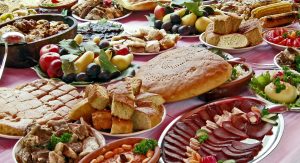
The name of this holiday full translates as “Glory to God.” Usually referred to as just “Slava,” this is a spiritual holiday unique to each Serbian Orthodox family. The date of a family’s Slava depends on the specific saint they venerate; for example, many families celebrate St. Nicholas (December 19), St. George (May 6), or St. John (January 20). The celebration includes a ritual feast that features a ceremonial bread (slavski kolač), a candle, and a gathering of extended family and friends. The ceremonial bread is blessed by a priest and often consecrated by having wine poured over it. Other key elements include žito (wheat pudding), representing resurrection and eternal life, and a festive meal that can be either fasting (meatless) or non-fasting, depending on the saint’s feast day. The celebration is both a religious observance and a reaffirmation of family heritage. Some families have gatherings so large that the celebration can be extended into the next day.
The 18th birthday
in Serbian: Punoletstvo (Пунолетство)
(not a day off)
The 18th birthday (Пунолетство) is considered a major milestone in Serbian life and its celebration is usually large and formal with large family gatherings and special blessings. These birthdays are often celebrated in kafanas or clubs with traditional dinners with music, dancing, and heartfelt speeches. In a way, it shares similarities with the Latin American quinceañera, which celebrates a girl’s 15th birthday as her transition into womanhood. However, the Serbian 18th birthday, called the “punoletstvo” in Sebian, is focused on the legal and societal acknowledgment of full adulthood for both young men and women.
You’ll Also Love
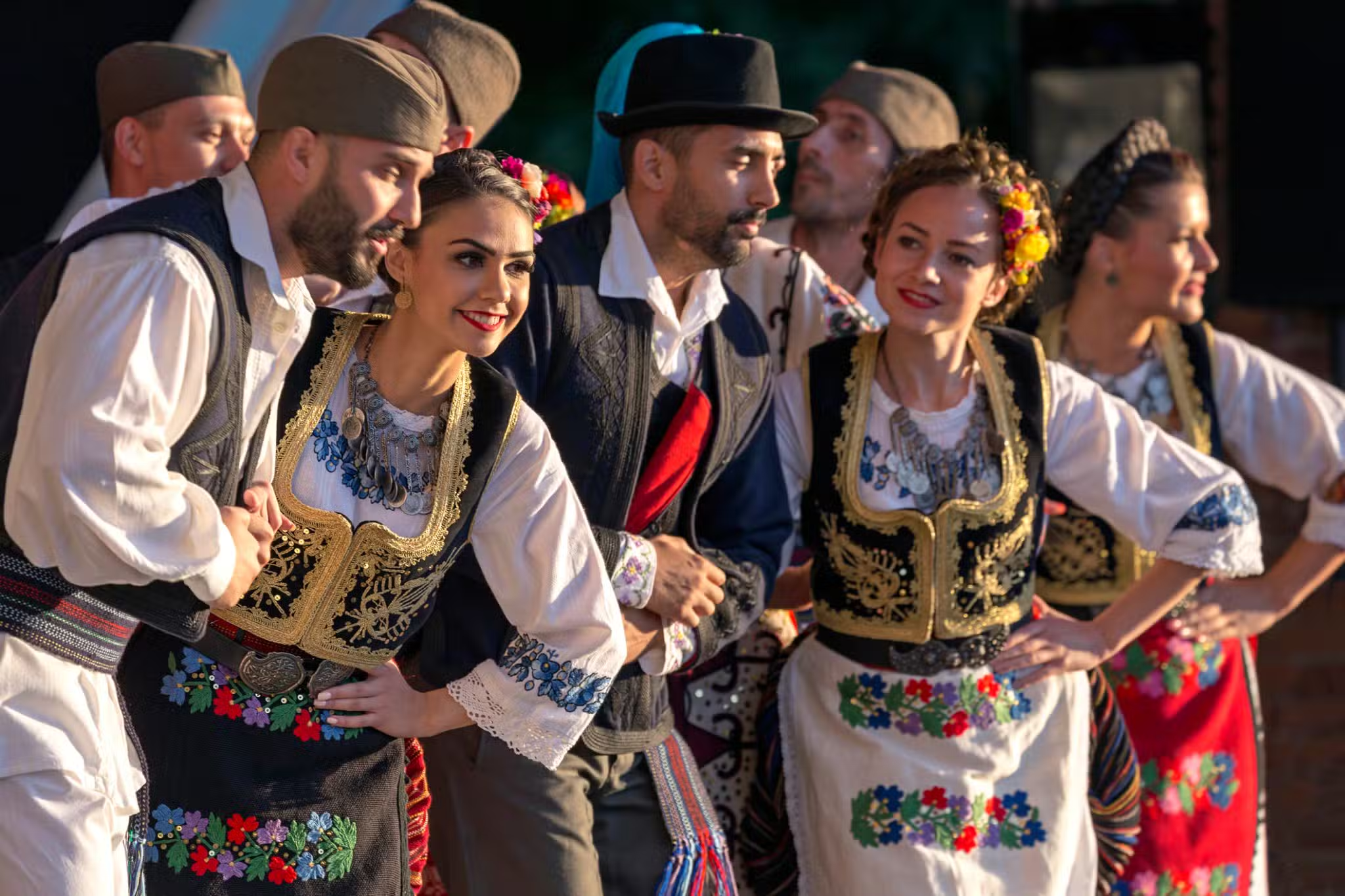
Serbia’s Story of Identity: Heroes, Memory, and Meaning
What shapes Sebian national identity? The answer is complex and personal, but one key element is the Sebian national narrative. This includes the heroes and pivotal events taught in schools, the places central to the nation’s collective memory, and the language and beliefs that frame its worldview. A national narrative goes beyond history: it is […]

The Talking Serbian Phrasebook
The Talking Phrasebook Series presents useful phrases and words in side-by-side translation and with audio files specifically geared to help students work on listening skills and pronunciation. Below, you will find several useful phrases and words. To the left is the English and to the far right is the Serbian translation in both Latin and […]
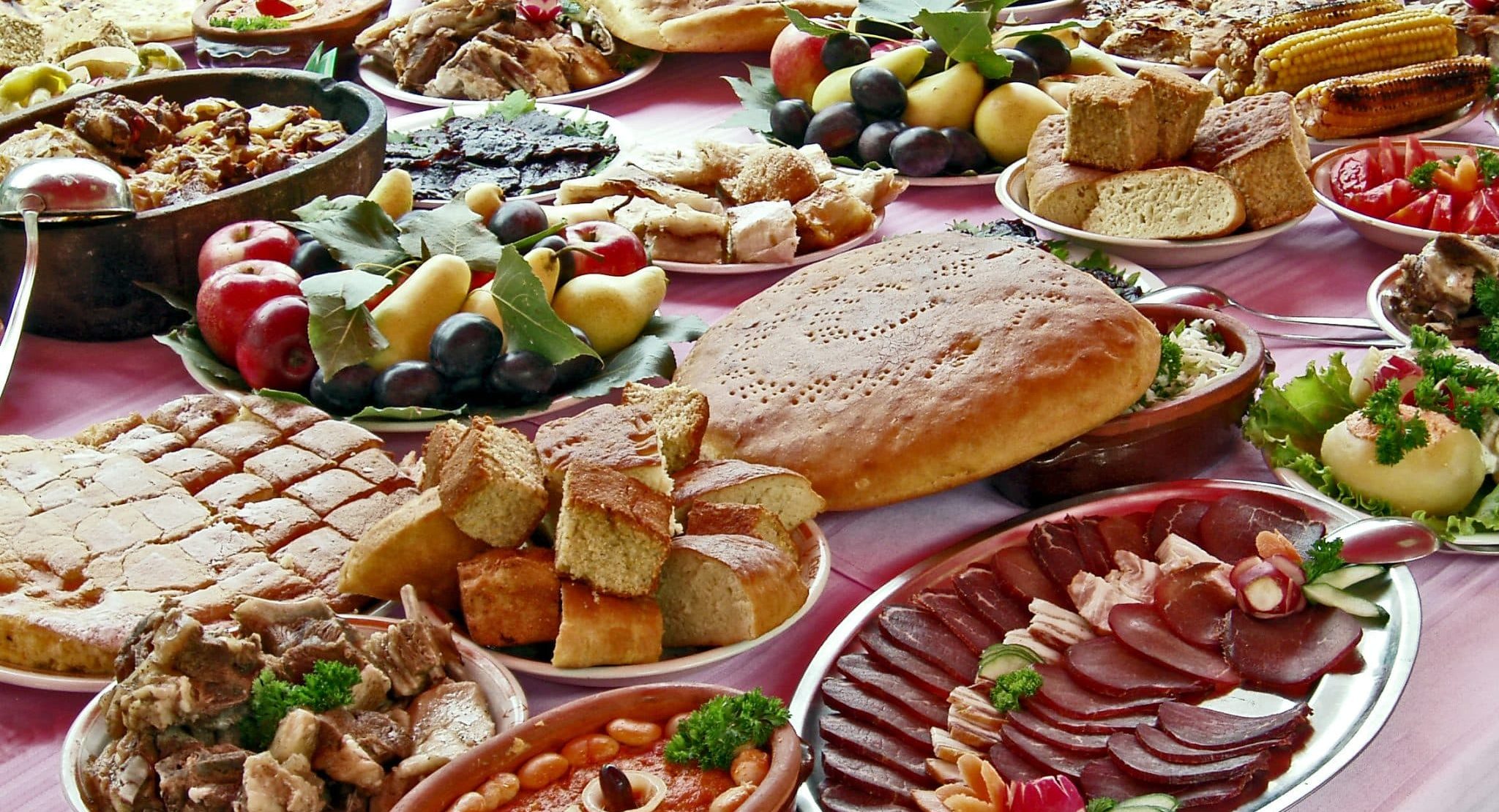
The Serbian Food Dictionary
Serbian cuisine is heavy on meat, dairy, and grains, a product of the nation’s geography and history. Serbia’s mountainous south lends itself to pastoralism and the earliest Serbs were mostly herdsmen. The Ottomans, who dominated Serbia from the 14th-19th centuries, were more interested in Serbia’s fertile river valleys, concentrated in the north. Serbs and their […]
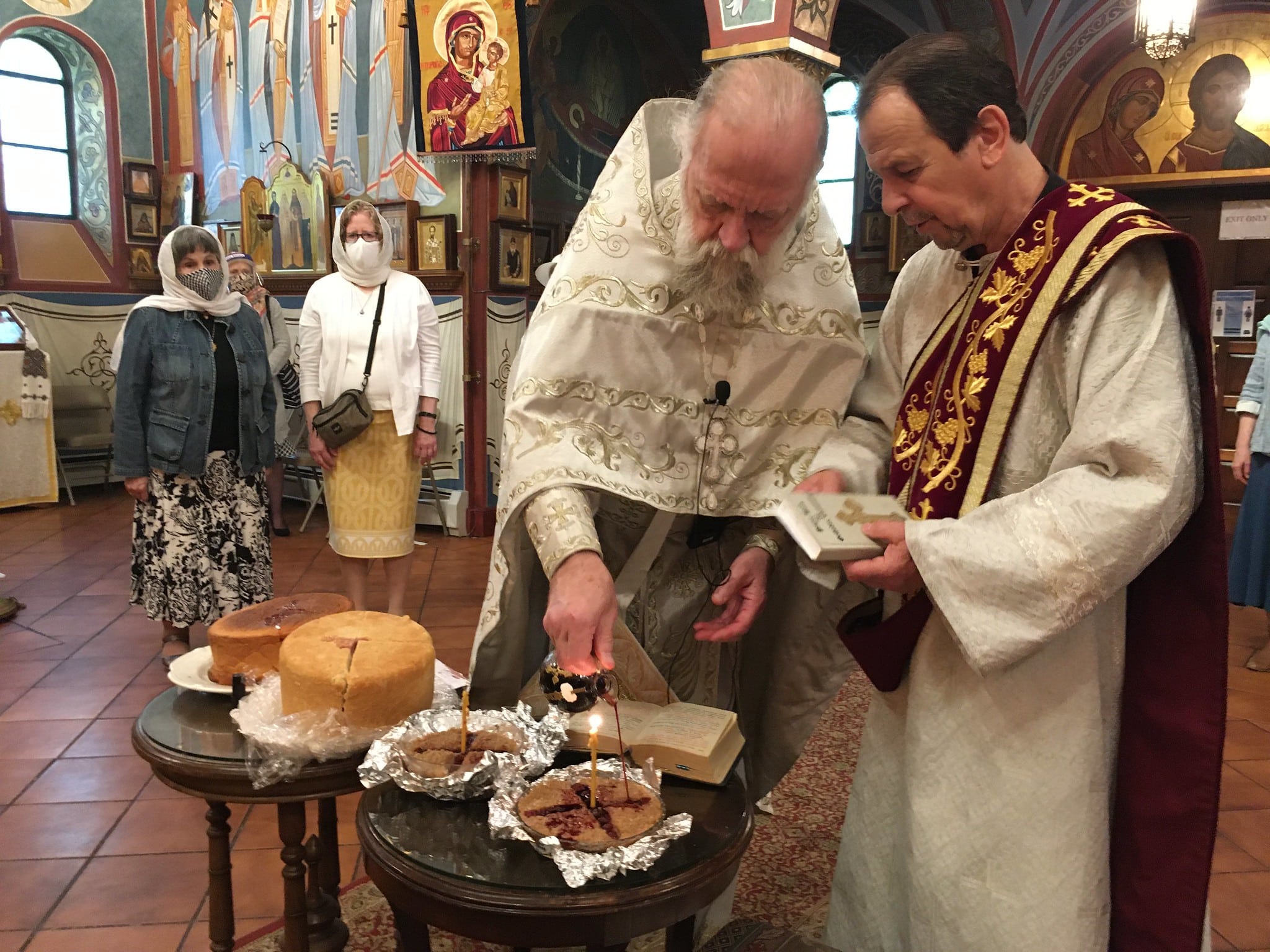
Serbian Holidays 2026: A Complete Guide
Serbian holidays show how civic and religious identity are often interchangeable in Serbia. Religion enters into almost every holiday listed below. Many of these holidays focus on family and tradition, but many observances focus on the sacrifices that Serbs have made in wars and battles ranging from the Battle of Kosovo in 1389 to WWI […]

